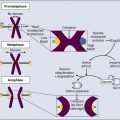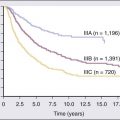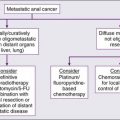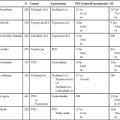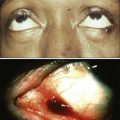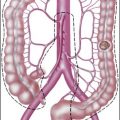Maher Karam-Hage, Vance Rabius, Paul M. Cinciripini, Jason D. Robinson and Ellen R. Gritz Prevalence of Tobacco Use and Nicotine Dependence in Patients with Cancer • Approximately one in five American adults is a current smoker. • Smoking accounts for one third of all cancer deaths. • Patients with cancer in general have a higher dependence on nicotine and are more likely to be smokers or ex-smokers. • Approximately 15.1% of adult cancer survivors are current smokers. Biological Characteristics and Genetics • The reward pathway and dopamine are involved in the use, abuse, and dependence of all such substances, including nicotine. • Pharmacogenetics research has the premise to tailor treatment to enhance efficacy and reduce toxicity. • Several instruments measure nicotine dependence; among them are the Fagerström Test for Nicotine Dependence and the Wisconsin Smoking Withdrawal Scale. However, the evaluation and final recommendation are clinical, and the treatment plan must be individualized. Current Treatment Recommendations • Nonpharmacologic treatments include behavioral counseling (e.g., identifying triggers and managing withdrawal), quitlines, and self-help material (e.g., booklets and videos). • Nonpharmacologic approaches are popular but yield relatively low quit rates. • Pharmacologic treatments approved by the U.S. Food and Drug Administration, including nicotine replacement therapies (e.g., transdermal patch, gum, nasal spray, inhaler, and lozenge) and bupropion, have been shown to double smoking cessation rates compared with placebo. Varenicline is the newest agent, with efficacy superior to that of nicotine replacement therapies and bupropion. • About half of patients with cancer continue to smoke after diagnosis, even though tobacco use complicates cancer treatment, reduces survivorship rates, increases the risk for a second primary tumor, and diminishes quality of life. • Few studies have examined predictors of continued smoking among patients with cancer, but some studies have reported on such factors as nonsmoking-related cancers, comorbid depression, and poor prognosis. • Several retrospective studies have shown the detrimental effect of continuing to smoke on cancer treatment outcomes. A limited number of randomized controlled trials of smoking cessation treatments have been conducted among patients with cancer. These reports suggest that a combination of medications and a behavioral approach are needed to make a difference. • Patients with cancer who use tobacco should be treated according to evidence-based treatment guidelines with particular attention to tailoring education about their disease-tobacco link, pharmacotherapy, comorbid medical and psychiatric disorders, and family/household tobacco use. Barriers to Cessation Treatment in the Oncology Setting • Health care providers have limited time and expertise to address smoking among patients with cancer, and patients may have comorbid substance use/dependence or other emotional and mental disorders that undermine their ability to quit smoking. • Systems-level changes and tailored treatment approaches are thought to be needed to lower the rate of persistent tobacco use and recidivism among patients with cancer. Tobacco use has become a worldwide epidemic, and cigarettes are the most common form of tobacco consumed. Smoking cigarettes constitutes the most sophisticated system of drug delivery (nicotine) to the brain, resulting in diseases that are among the most common and the deadliest and yet the most preventable of those involving human behavior: respiratory diseases, cardiovascular diseases, and cancer.1 Tobacco use accounts for at least 30% of all cancer deaths in the United States, and smoking has been causally linked to 18 different cancers, including lung, head and neck, esophageal, pancreatic, bladder, kidney, cervical, endometrial, and gastric cancers and acute myeloid leukemia.2 The scare of a diagnosis of cancer often impels smokers to quit, and although some people resume use of tobacco once their cancer is in remission, others manage to avoid a relapse. The high recidivism rates could be attributed to comorbid conditions and to the neurobiology of tobacco addiction. Tobacco addiction is a complex phenomenon. Nicotine receptors are spread throughout most areas of the brain, and nicotine consumption activates the reward pathway, like all other substances of addiction.3 In addition, several other neurotransmitter systems are implicated in the process of establishing an addiction to nicotine.4 After years of tobacco consumption, complex neuronal involvements and adaptations develop, rendering the extinguishing of tobacco addiction a challenging task. However, pharmacologic and behavioral treatments have proven to be essential and highly effective in comparison with other medical treatments of chronic diseases.5 In recent years, individualized treatment has become the gold standard, with hopes that advancement in genetics will allow us to eventually match the best treatment to each individual profile.6 Unfortunately, multiple hurdles and obstacles remain in the way of extending basic treatment to all smokers and tobacco users, including those diagnosed with cancer and cancer survivors.7 In this chapter we summarize these aspects of tobacco use and their implication for patients with cancer. Tobacco use, in particular smoking cigarettes, began an upward trend around the beginning of the twentieth century. This trend has been mostly attributed to James Buchanan “Buck” Duke, who introduced the mechanized manufacturing of cigarettes and used aggressive marketing techniques,8 in addition to other societal forces and circumstances such as the free cigarettes provided with daily rations to all enlisted American soldiers during World Wars I and II.9 That upward trend continued until a pivotal moment: the release of the landmark first Surgeon General’s report on smoking and health in 1964,10 at which point the evidence from more than 7000 scientific publications on harm from tobacco smoke was put together and received the endorsement of Surgeon General Luther Terry, the highest officer for public health within the United States government. That report had an enduring effect on public beliefs and attitudes about tobacco. As an example, a Gallup Survey conducted in 1958 found that only 44% of Americans believed smoking caused cancer, whereas 70% believed so by 1969, 5 years after the report was published. The belief that smoking causes cancer continued to rise, and the rate of belief reached 94% by 1990.11 Furthermore, since 1964 a gradual and almost annual decrease in smoking rates has occurred in the United States, with the rate reaching a plateau of around 20% in the past 5 years. This lower rate nonetheless encompasses 60 million Americans who, almost 50 years after the landmark report, continue to use tobacco despite the clear knowledge of harm from its consumption. Other Surgeon General reports subsequently solidified the case against tobacco consumption, and to date 33 of those reports have been dedicated to tobacco, focusing on specific topics such as nicotine addiction, secondhand smoke, minorities, women, and youth.12 Although these efforts have improved the public health, unfortunately, disparities in health care extend to tobacco consumption, as evidenced by higher smoking rates among American Indians/Alaskan Natives, persons with diagnosis of mental disorders, those who are under the poverty level of income, and the unemployed. It is of importance that level of education is inversely related to smoking rates.13 Although the trend for smoking among patients older than 45 years and who are recovering from cancer has decreased to about the same as for the general population, the prevalence among survivors in the younger age group is still high. Around 40.4% of the persons 18 to 44 years of age in the survivors cohort still smoke cigarettes compared with 24.7% in the general population of the same age range.14 Nevertheless, one potential confounding factor contributing to these statistics is the high mortality rate in patients with smoking-related tumors. Therefore smokers who would survive less lethal cancers are counted within the younger age group.15 Smoking cessation rates in the cancer population seem highly dependent on the disease (tumor) site and its relationship to smoking.16 As an example, around 80% of patients with lung cancer and 65% of patients with head and neck cancer were reported to stop smoking in the year after their treatment17,18 compared with 31% of patients with bladder cancer.19 Other factors come into play in improving smoking cessation among patients with cancer, such as having a good prognosis, having spent a long time in the hospital (a smoke-free environment), and having treatment-related adverse effects. In particular, adverse effects of treatment such as nausea, difficulty breathing, facial surgery, or difficulty swallowing may make it harder or more difficult to smoke. Consequently, physicians should pay attention to the particular smoking-cessation pattern in patients with cancer. Typically, cancer survivors have an increased chance of a delayed relapse to smoking 1 to 6 months after treatment,20 in contrast to persons in the general population, who generally relapse within the first week or so of cessation. Unfortunately, it has been reported that patients with lung cancer who have already abstained from smoking prior to their diagnosis tend to return to smoking once they are informed of their cancer.21 Many studies have been published on the benefits of smoking cessation in patients with cancer; many of the studies focus in particular on cancer treatment–related outcome (Table 24-1). Unfortunately, almost all published studies to that effect have methodologic limitations such as retrospective analyses, nonstandardized tobacco assessment, no biochemical confirmation, and no tracking of behavior after diagnosis. Addressing smoking behavior at the time of diagnosis and throughout treatment and recovery is thus essential for persons with cancer, constituting a continuum of potential teachable moments as described by McBride et al.22 Table 24-1 Continued Smoking Versus Cessation As It Relates to Cancer Treatment Outcomes in Retrospective Studies Like most drugs associated with abuse and dependence, nicotine use stimulates its receptors in the brain. These receptors are spread throughout most areas of the brain. Nicotine use leads to a rapid increase in dopamine release in the nucleus accumbens and the ventral tegmental area. This stimulation typically occurs within 10 seconds of smoking a cigarette.23,24 It has been established that natural rewards such as food consumption, social affiliation, and sexual activity, which are linked to survival of the individual or species, normally activate these two central areas of the reward pathway within the brain. Furthermore, the reward pathway projects from the nucleus accumbens and ventral tegmental area to the prefrontal cortex, the amygdala, and the olfactory tubercle (Figure 24-1), leading to a complex interaction between the reward, its saliency, and the ability to inhibit the intake of a drug. Several other brain systems (neurotransmitters and pathways) are thought to be involved in the process of addiction to a substance, whereas dopamine appears to be the final common neurotransmitter in the reward pathway. These other pathways are thought to be involved via neuroadaptation (the brain adjusting to the new conditions). The γ-aminobutyric acid, glutamate, serotonin, norepinephrine, cannabinoid, opioid, and cholinergic systems have all been shown to be involved in one way or another in the brain neuroadaptation process that results in addiction to nicotine and other substances.27–27 However, it is important to note that these major neurotransmitter systems in the brain are in constant and dynamic interplay, possibly resulting in different types of neuroadaptations that lead to and maintain the addiction to a substance.4 A pleasurable sensation from the activation of the reward pathway is associated with the acute use of an addictive substance such as nicotine. However, repeated administration of a substance, in this case nicotine, over months or years is likely to lead to increased tolerance, which in turn produces a state of withdrawal in the absence of nicotine. Tolerance and withdrawal are the physiological hallmarks of dependence (addiction) and are thought to be the result of neuroadaptive effects occurring within the brain.28 Interestingly, the chronic use of drugs of abuse and dependence (including nicotine) seems to result in a generalized decrease in dopaminergic neurotransmission. Although this decrease can be a prodrome for vulnerability to addiction, it is likely to be a homeostatic response to the intermittent yet repetitive increases in dopamine induced by the frequent and sustained use of such drugs.29 Another facet of neuroadaptation is the increase in levels of corticotropin-releasing factor induced by the use of substances; this increase is associated with the activation of central stress pathways. Sensitization and counteradaptation are two of the major neuroadaptive models that have been proposed to explain how changes that start in the reward pathway may result in the development of substance dependence. Sensitization can be thought of as the gradual increase in “wanting” a drug after intermittent but repeated use, which then can facilitate the transition from occasional use to chronic use and tolerance.29,30 The counteradaptation model postulates that the initial positive feelings of reward (resulting from the use of a drug) are followed by an opposing rather than synchronous development of tolerance, as the brain’s homeostatic (counterbalance) response to the exposure. Finally, tolerance is often manifested by the appearance of withdrawal symptoms associated with the lack of the substance.31 Other models of nicotine addiction are based on mechanisms associated with capacity for or the lack of cognitive control and the development of reinforcement learning,32 in particular the negative reinforcement associated with withdrawal from nicotine, which builds up with the reduction in negative affect from smoking a cigarette.33 Several recent genome-wide association (GWA) and candidate gene studies have revealed significant associations between smoking, nicotine dependence (ND), and lung cancer in a region of interest on the long arm of chromosome 15 (15q24/15q25.1), encompassing the nicotinic acetylcholine receptor CHRNA3-A5-B4 subunit cluster. Neuronal nicotinic acetylcholine receptors are pentameric ligand-gated channels composed of α and β subunits,34 several of which contribute to nicotine-stimulated dopamine release in the striatum, a region associated with reward learning and vital to the development of substance dependence.35 The CHRNA3-A5-B4 subunit cluster demonstrates extensive linkage disequilibrium, and the single nucleotide polymorphisms on that cluster are frequently correlated. Some of the statistically strongest associations with ND in persons of European or African ancestry have been obtained for the nonsynonymous CHRNA5 single nucleotide polymorphism rs16969968.36–41 Other gene variants in this region (CHRNA3-A5-B4) identified by GWA and candidate gene studies as being significant contributors to the risk of smoking, ND, and lung cancer include the CHRNA3 rs1051730,41–45 the CHRNA3 rs578776,36,38 and the AGPHD1 rs8034191.36,42,44 Finally, candidate gene studies have identified associations between ND and genetic markers associated with dopamine expression (ANKK1,44,46–48 DRD2,48,49 and SLC6A349–52), serotonin expression (SLC6A4),55–55 and nicotine metabolism (CYP2A6).45 An increasing amount of work has been focused on the investigation of genes that inform brain regions related to nicotine dependence. The CHRNA5 rs16969968 risk allele was found to be associated with decreased resting state connectivity strength in a dorsal anterior cingulate-ventral striatum/extended amygdala circuit associated with smoking.56 A small functional magnetic resonance imaging study that investigated the role of CHRNA5 rs16969968 on brain reactivity to smoking cues in nicotine-dependent women found that women homozygous for the G allele had greater functional magnetic resonance imaging reactivity to smoking cues in the hippocampus and dorsal striatum, which are areas related to memory and habitual behavior.57 Smokers identified as fast nicotine metabolizers, as indicated by the CYP2A6 gene, had greater brain responses to smoking cues in the amygdala, cingulate cortex, hippocampus, insula, and striatum compared with slow metabolizers.58 A growing body of candidate gene studies have examined genetic predictors of responsiveness to nicotine replacement therapies (NRTs) and bupropion smoking-cessation therapies (see references 59, 60, and 61 for reviews). Cessation outcome for NRT has been found to be associated with several polymorphisms in the D2 receptor gene (DRD2), including the C957T rs6277,62 −141C ins/del rs1799732,62 and ANKK1 (rs1800497).65–65 Other markers that influence dopamine reuptake and expression, including the COMT rs468066,67 and a VNTR in the DRD4 C-521T,68 have been shown to predict cessation outcome for NRT. Genes associated with the opioid (OPRM1),71–71 serotonergic (SLC6A4),69,72,73 cannabinoid,74,75 and CHRNA3-A5-B476 pathways have also been associated with NRT outcome. Similarly, variants of many of these same markers have been associated with successful smoking cessation treatment using bupropion, including ANKK1,79–79 DRD2 −141C ins/del,62 COMT,80 DRD4,81 SLC6A3,82 CYP2B6,83 and the CHRNA3-A5-B4 subunit cluster.86–86 Varenicline, the most recently approved smoking cessation pharmacotherapy, is the next target for pharmacogenetic inquiry. A recent analysis of 1175 smokers who received either varenicline, bupropion, or placebo found that abstinence was associated with multiple CHRNB2, CHRNA7, and CHRNA4 subunit genes for persons given varenicline and with the CYP2B6 for persons given bupropion.6 The smoking rates among persons with no mental illness, past-month mental illness, and lifetime mental illness have been reported to be 22%, 34%, and 41%, respectively, which means that having a current or past mental disorder effectively doubles the likelihood of being a smoker. Furthermore, in a nationally representative sample, it was reported that smokers with a mental disorder in the past month consume 44% of all cigarettes smoked.87 The evidence that smoking is more prevalent in and closely linked with several psychiatric comorbidities, including abuse of other substances, suggests a shared biological pathway between nicotine dependence and these psychiatric and substance use conditions. For example, several studies have demonstrated a positive correlation between smoking and alcohol use, abuse, or dependence, substance abuse or dependence, and other psychiatric disorders.87–94 When looked at from the opposite direction, the prevalence of lifetime alcohol dependence and/or drug abuse with the adult smoker population is estimated to be between 23% to 30%.95,96 Similarly, among current smokers (whether tobacco-dependent or nondependent), the lifetime rates of mood and anxiety disorders have been reported to range from 33% to 46% and from 12% to 26%, respectively.95 Furthermore, among current smokers who are tobacco-dependent, even the 12-month prevalence of any mood or anxiety disorder is reported to be 22%, a relatively high proportion.97 Adding support to the idea of a possible causal link between smoking and mental health disorders is the fact that smokers also have an elevated risk of a first onset of major depression, panic disorder, or generalized anxiety disorder.98–102 Cognitive dysfunction has also been highly linked to smoking, as evidenced by the odds ratio comparing persons who have ever smoked with persons who have never smoked, and smoking is positively related to the number of attention deficit hyperactivity disorder (ADHD) symptoms. There seems to be an effect of early onset on the severity of ADHD or vice versa, because lifetime regular smoking has an inverse relationship between the number of ADHD symptoms and the age at onset. In addition, a positive relationship between the number of symptoms and the number of cigarettes smoked has been observed.103 The aforementioned evidence of co-occurrence supports the importance of screening and treating mental health disorders among smokers, whether the relationship is causal or a simple correlation. Treating these disorders may increase the ability to focus on quitting smoking, or at least reduce the impact of negative affect or comorbid mental disorders on a person’s ability to quit using tobacco, and may have an impact on their resilience with regard to maintaining tobacco abstinence. Treating these disorders is of particular importance among patients with cancer and cancer survivors, because higher levels of confidence about the ability to quit smoking were found to be related to lower depression scores and lower tumor stage.104 In the absence of specific biological markers, the diagnosis of nicotine addiction remains a clinical one. The Diagnostic and Statistical Manual of Mental Disorders, fourth edition, text revision (DSM-IV-TR),105 uses universal criteria for all substance dependence (traditionally referred to as addiction), including nicotine. Because of their universality, the DSM-IV-TR criteria are not particularly specific to nicotine and therefore do not capture many of the peculiar aspects of tobacco use and ND (addiction). This lack of specificity has led to the development of specific scales to quantify ND. Traditionally, the Fagerström Test of Nicotine Dependence (FTND) has been used, and more recently the Wisconsin Inventory of Nicotine Dependence Motives (WISDM) has become more accepted as a more comprehensive scale. Despite their limitations, the DSM-IV criteria offer ease of use for clinicians because of their universality for all substances of dependence. According to DSM-IV-TR, the diagnosis is made when someone meets three or more of the seven criteria for at least a year. As previously mentioned, some criteria are more pertinent than others to nicotine. For instance, after prolonged smoking, the user develops nicotine tolerance and begins to exhibit withdrawal symptoms when nicotine is absent. That withdrawal can happen overnight with nicotine’s half-life in blood being 1 to 2 hours.106 Having tolerance and/or withdrawal is referred to as physiological dependence in the DSM-IV-TR. Nicotine may also be responsible for three other criteria for dependence: loss of control over smoking (e.g., not being able to reduce or stop smoking, or smoking more than intended), compulsive smoking (e.g., smoking all day long and giving up important events or activities if there is no place to smoke), and continued smoking despite adverse consequences (e.g., heart attack, emphysema, or cancer). The newer DSM-5 criteria (planned to be released in 2013) are proposed with a similar universal applicability to all substances; however, they expand the “use despite consequences” criteria and incorporate “craving for a substance” as an important new dimension, and only two of those criteria would suffice to have the diagnosis of “substance use disorder,” a new nomenclature. The more criteria that are met, the more severe is the disorder, which will effectively replace the term “dependence,” which in past versions of the manual had been introduced to replace the term “addiction.”107 The FTND (Table 24-2) is one of the most widely recognized and used scales for nicotine dependence. This tool, and in particular its first item (“How soon after you wake up do you smoke your first cigarette?”), measures physiological dependence reliably well (i.e., tolerance and withdrawal). However, it does not measure well the psychosocial and behavioral dimensions of ND.108 A person with three points or more out of a possible maximum of 10 points on this scale is customarily considered to be ND.109,110 Table 24-2 Items and Scoring for Fagerström Test for Nicotine Dependence236 The WISDM111 is a more recently developed multidimensional scale of ND. This comprehensive scale includes measures of cognitive enhancement, negative reinforcement, positive reinforcement, automaticity, affiliative attachment, loss of control, behavioral choice/amelioration, craving, cue exposure/associative processes, social/environmental goals, taste/sensory processes, weight control, and tolerance. The WISDM has been validated and found to be reliable in measuring ND, and it has been reported to have internal consistency along a 13-factor model.112 1. The Patient Health Questionnaire113 is a multiple-choice self-report inventory that is used as a screening and diagnostic tool for mental health disorders of depression, anxiety, alcohol, eating, and somatoform. 2. The Center for Epidemiological Studies on Depression114 tool is a 20-item instrument that was developed by the National Institute of Mental Health to screen for major or clinical depression in adolescents and adults. This instrument has four separate factors: depressive affect, somatic symptoms, positive affect, and interpersonal relations. 3. The Sleep Problems Questionnaire115 is a four-item brief survey (each item scored from 0 to 5 based on the last 4-week period) that considers difficulty falling asleep, difficulty staying asleep, waking up multiple times, and waking up feeling tired. 4. The FTND109 has previously been described. 5. The Wisconsin Smoking Withdrawal Scale116 is a nicotine withdrawal scale that contains seven factors: anger, anxiety, sadness, concentration, craving, sleep, and hunger. 6. The Positive Affect and Negative Affect Schedule117 is a psychometric scale developed to measure the largely independent constructs of positive and negative affect both as states and traits. Positive and negative affect have been shown to relate to other personality states and traits, such as anxiety. 7. The Alcohol Use Disorders Identification Test118 is a simple 10-question test developed by the World Health Organization to determine if a person’s alcohol consumption may be harmful. The test was designed to be used internationally and has been validated in different settings; originally it was validated in a study using patients from six countries. Questions 1 to 3 deal with alcohol consumption, questions 4 to 6 relate to alcohol dependence, and questions 7 to 10 consider alcohol-related problems. Tobacco treatment among patients with cancer needs to be as intensive and tailored as possible. Hence if treatment programs are to be comprehensive and to make a difference, they ought to provide at a minimum behavioral modalities and medications.119 Comprehensive treatments by definition would need to address the biological, psychological, and social aspects of ND. Moreover, these approaches ought to be longitudinal, because tobacco addiction is a chronic disease that often is characterized by multiple relapses before reaching full remission.120 The main components of a biopsychosocial treatment are behavioral therapies and social support in conjunction with medications. Among the various therapies, motivational interviewing, skill-building, problem-solving, and cognitive behavioral therapies have been empirically supported.5 Although the main first-line medications that are approved by the Food and Drug Administration (FDA) are NRTs, bupropion (Zyban), and varenicline (Chantix), the second-line medications clonidine and nortriptyline have been used off-label and tested in clinical trials with similar positive results. Among several other medications that have been or are being researched, three have shown promising preliminary results but have faced different challenges: topiramate, rimonabant, and nicotine vaccines. Although a care provider may prescribe any available medications off-label, to date, none of the aforementioned three medications is FDA-approved for smoking cessation purposes, and only topiramate is available in the United States. However, their importance lies in their mechanisms of action, which may lead to improved or similar agents in the future. Topiramate, a voltage-dependent sodium channel blocker, augments γ-aminobutyric acid, antagonizes glutamate, and inhibits carbonic anhydrase activity; it has FDA label indication as an adjunct treatment for seizure disorders and migraine headaches.121 Topiramate is reported to have a beneficial effect in the treatment of alcohol dependence and ND but has several adverse effects that limit its use.122 Rimonabant is a selective CB1 endocannabinoid receptor antagonist reported to have beneficial effects for the treatment of obesity123 and ND124; it was shown to be relatively efficacious compared with placebo (odds ratio 1.6)125 in large multinational trials. It was available in Europe from mid 2006 until January 2009; then the European Agency for the Evaluation of Medicinal Projects recommended its withdrawal because of neuropsychiatric adverse effects (i.e., depression and several reports of suicides).126
Nicotine Dependence
Current Treatments and Future Directions
Introduction
Epidemiology and Tobacco Use in Patients with Cancer
Authors (Journal)
Year
Cancer Outcome if Continued Smoking
Sample Size
Tumor Site
Fortin et al.210 (Int J Radiat Oncol Biol Phys)
2009
Smoking and drinking at baseline were associated with poor outcomes
1871
Head and neck
Rades et al.211
(Int J Radiat Oncol Biol Phys)
2009
Smoking during radiation had a significant effect on locoregional control
181
Lung
Marin et al.212
(Plast Reconstr Surg)
2008
Serum cotinine concentration greater than 10 ng/mL may predict an increased risk of wound complication
89
Head and neck
Chen et al.213 (BJU Int)
2007
Higher recurrence rate for patients with nonmuscle-invasive bladder cancer
297
Bladder
Tammemagi et al.214 (Chest)
2004
Worse survival in smokers
1155
Lung
Garces et al.215 (Chest)
2004
Smoking after a lung cancer diagnosis negatively affects quality of life scores
1506
Lung
Pytynia et al.216 (J Clin Oncol)
2004
Threefold increases in risk for overall death, death as a result of disease, and recurrence of disease
100
Head and neck
Fox et al.217 (Lung Cancer)
2004
Poorer prognosis for survival after radiation therapy of non–small cell cancer
237
Lung
Nordquist et al.218 (Chest)
2004
Worse survival
654
Lung
Videtic et al.219 (J Clin Oncol)
2012
Poor survival rates if continued to smoking during radiation and chemotherapy
215
Lung
Chelghoum et al.220 (Ann Oncol)
2002
Lower survival in patients with acute myeloid leukemia by shortening complete remission duration and subsequent survival; severe infections during aplasia
643
Leukemia
Kreuzer et al.221 (Br J Cancer)
2000
Higher risk of developing lung cancer among men than among women
9792
Lung
Marshak et al.222 (Int J Radiat Oncol Biol Phys)
1999
Smoking correlated with decreased local control
207
Glotis
Fleshner et al.223 (Cancer)
1999
Diminished recurrence-free survival
286
Bladder
Daniell et al.224 (J Urol)
1995
Greater 5-yr tumor-specific mortality rate with stage D2 disease
359
Prostate
Daniell et al.225 (Am J Clin Pathol)
1993
More often advanced-stage disease (stages II-IV)
157
Endometrium
Risch et al.226 (Am J Epidemiol)
1993
In both sexes, a greatly elevated risk of developing lung cancer, and an appreciably stronger risk for females than for males
845
Lung
Rugg et al.227 (Br J Radiol)
1990
A highly significant correlation of cancer during and/or after treatment
41
Head and neck
Archimbaud et al.228 (Cancer)
1989
Associated with early blast crisis and short survival
173
Leukemia
Daniell et al.229 (Cancer)
1988
Tobacco and obesity potentiate the early spread of malignant disease
623
Breast
Daniell et al.230 (Cancer)
1986
More advanced stage of tumors
392
Colon
Phillips et al.231 (Cancer)
1985
Marked depression in natural killer activity that was comparable with that of patients with carcinoma of the lung
68
Breast
Stevens et al.232 (Arch Otolaryngol)
1983
Smoking after diagnosis had a fourfold increase in the recurrence rate
200
Head and neck
Daniell et al.233 (N Engl J Med)
1980
Fared less well than nonsmokers with breast cancer
78
Breast
Hinds et al.234 (J Natl Cancer Inst)
1982
Greater probability of dying during the 12 mo after diagnosis
223
Lung
Johnston-Early et al.235 (JAMA)
1980
Decreased survival
112
Lung
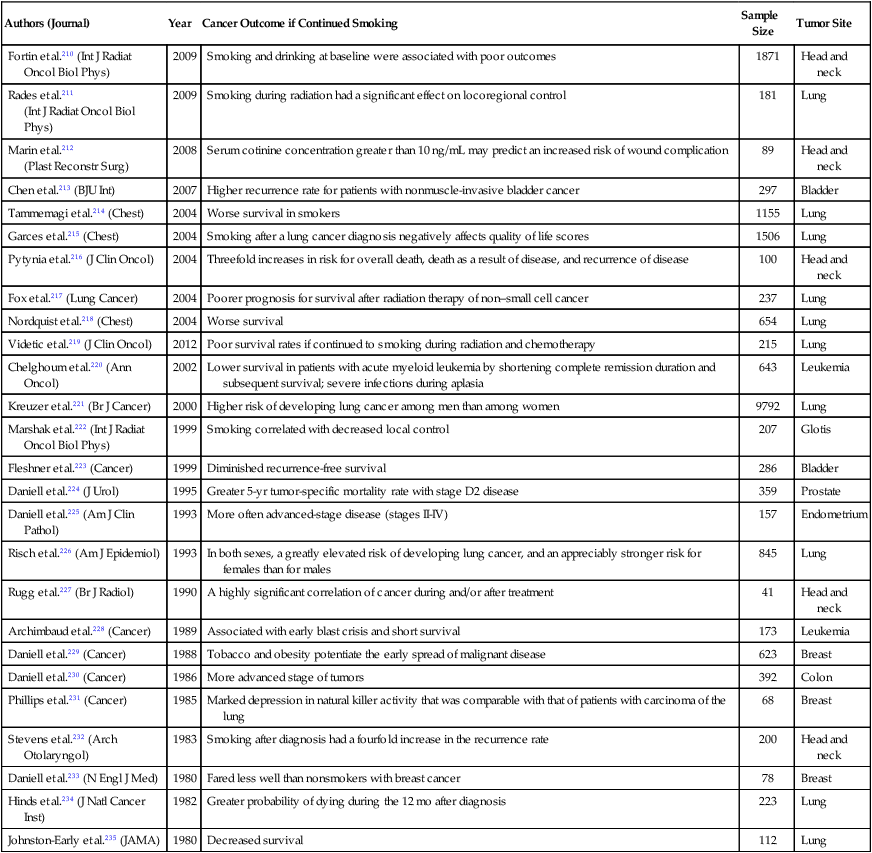
Reward Pathway and Biological Characteristics of Addiction
The Reward Pathway
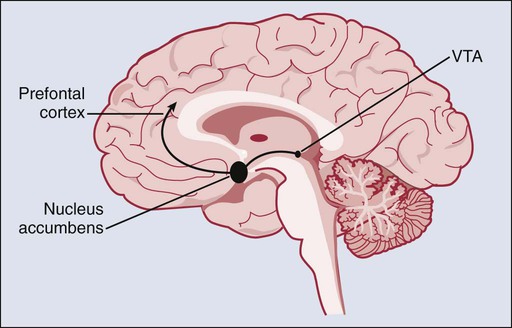
Neuronal Adaptation
Genetics
Genes Associated with Smoking, Nicotine Dependence, and Lung Cancer
Candidate Gene Studies Predicting Treatment Outcome
Comorbid Conditions
Patient Assessment
Question
Answer
Points
1. How soon after you wake up do you smoke your first cigarette?
Within 5 min
3
6-30 min
2
31-60 min
1
After 60 min
0
2. Do you find it difficult to refrain from smoking in places where it is forbidden (e.g., in church, at the library, in a cinema)?
Yes
1
No
0
3. Which cigarette would you hate most to give up?
The first one in the morning
1
All others
0
4. How many cigarettes per day do you smoke?
≤10
0
11-20
1
21-30
2
≥31
3
5. Do you smoke more frequently during the first hours after waking than during the rest of the day?
Yes
1
No
0
6. Do you smoke if you are so ill that you are in bed most of the day?
Yes
1
No
0
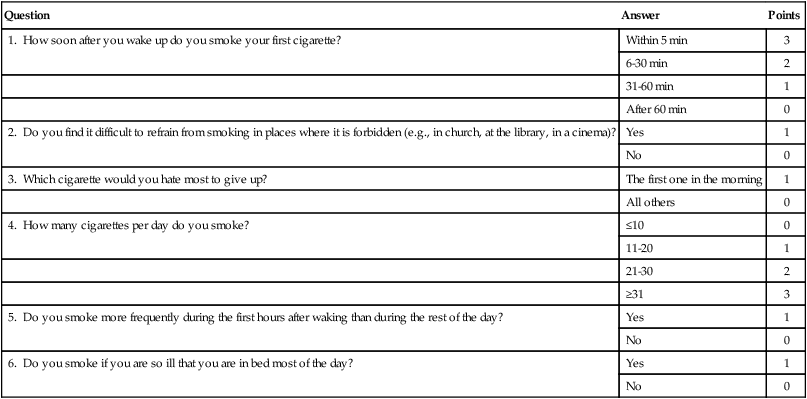
Treatment of Tobacco Use
![]()
Stay updated, free articles. Join our Telegram channel

Full access? Get Clinical Tree


Oncohema Key
Fastest Oncology & Hematology Insight Engine

